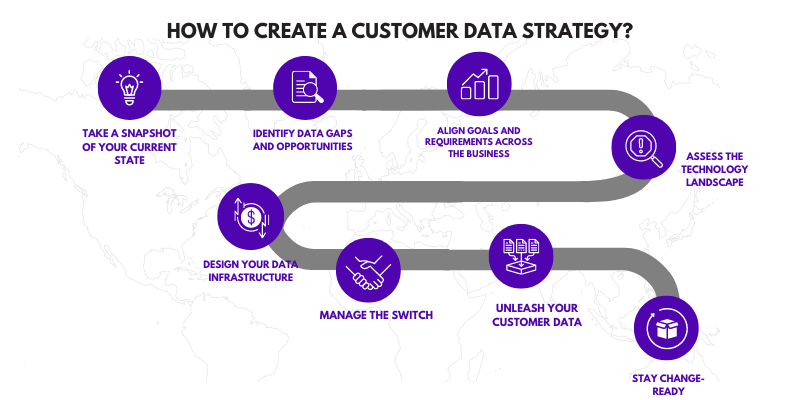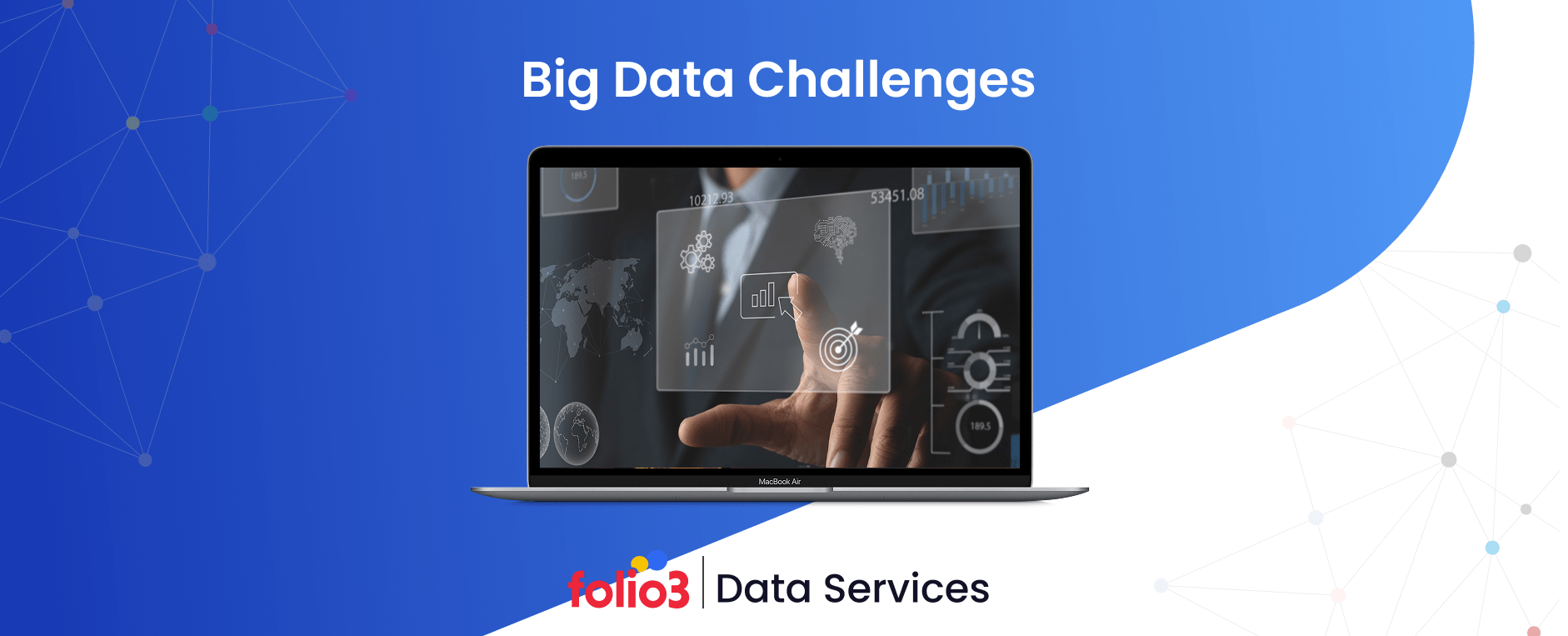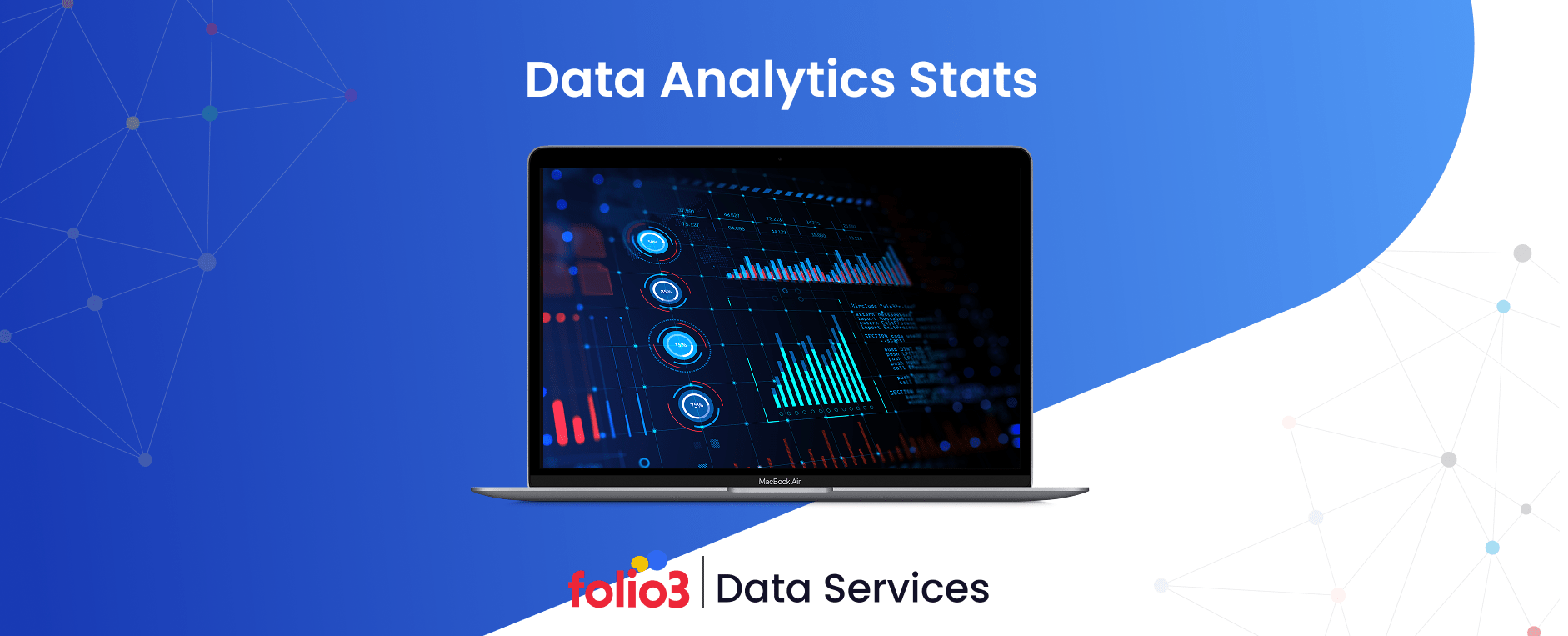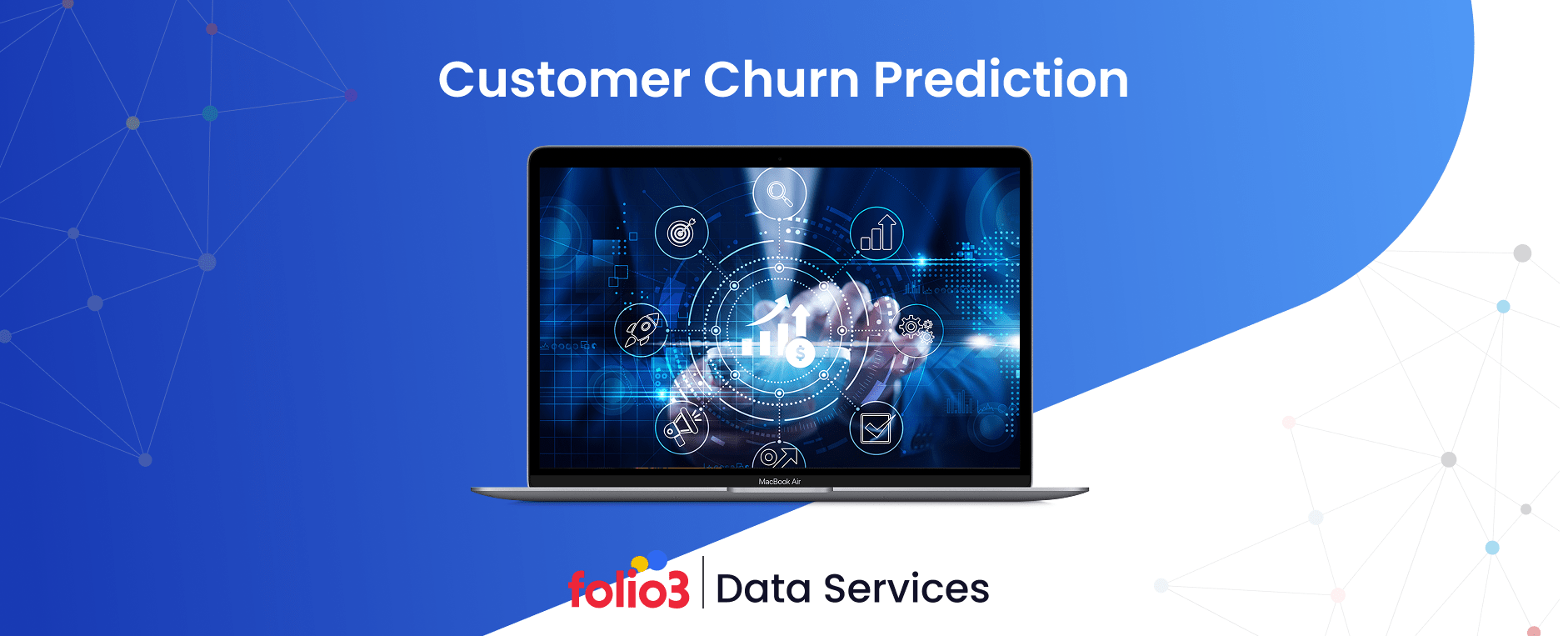Understanding and using customer data is paramount for business success in today’s data-driven economy. It involves a comprehensive approach to using the power of data to build stronger customer relationships and gain a competitive edge.
A customer data strategy is a blueprint for how an organization collects, manages, analyzes, and utilizes customer information to drive growth, enhance customer experiences, and make informed business decisions.
This blog will delve into the details of customer data strategy, defining its core elements, how to build it, and find out how businesses can effectively implement it to achieve their objectives.
What is a Customer Data Strategy?
If you want to know your business’s blueprint for collecting, analyzing, and using customer data, then it’s a comprehensive data strategy. A customer data strategy is a comprehensive plan focusing on principles that help businesses use and manage their customer data effectively.
It is a plan that allows and influences your decision-making as a business owner regarding quality, privacy, compliance, data collection, and the value of customer data.
It’s a strategic approach to understanding and interacting with customers to enhance customer experiences, drive growth, and make informed decisions.
A successful customer data strategy aligns with the overall business objectives and ensures data privacy and security. It’s an ongoing process that requires continuous monitoring, adaptation, and improvement.
At its core, a customer data strategy involves:
- Data collection: Gathering relevant customer information from various sources (e.g., websites, mobile apps, social media, CRM).
- Data management: Organizing, storing, and maintaining data quality and consistency.
- Data analysis: Deriving insights and patterns from the data to uncover customer preferences, behaviors, and trends.
- Data utilization: Applying insights to improve marketing campaigns, personalize customer experiences, and optimize business operations.
Why Should A Company Implement a Customer Data Strategy?
A retail company might implement a customer data strategy to better understand customer shopping habits and preferences.
By collecting data on purchase history, website behavior, and demographic information, the company can create personalized product recommendations, effectively target marketing campaigns, and optimize inventory management.
For instance, by analyzing customer purchase data, the retailer might identify a segment of customers who frequently buy athletic wear.
The company can then create targeted marketing campaigns promoting new athletic apparel, offering personalized discounts, or suggesting complementary products. This data-driven approach can increase customer satisfaction, loyalty, and sales.
How to create a customer data strategy?
A well-structured customer data strategy is essential for businesses seeking to thrive in today’s data-driven landscape. Here’s a step-by-step guide to creating an effective strategy:
Step 1: Take a Snapshot of Your Current State
Step 2: Identify Data Gaps and Opportunities
Step 3: Align Goals and Requirements Across the Business
Step 4: Assess the Technology Landscape
Step 5: Design your data infrastructure
Step 6: Manage the switch
Step 7: Unleash your customer data
Step 8: Stay change-ready

Step 1: Take a Snapshot of Your Current State
- Evaluate existing data: Understand the data types you collect and their quality and accessibility.
- Assess data sources: Identify where your data comes from (e.g., website, mobile app, CRM, social media).
- Analyze data usage: Evaluate how your organization currently uses customer data.
Step 2: Identify Data Gaps and Opportunities
First-party data
Identify the specific data you can collect directly from your customers. This includes purchase history, website behavior, and customer feedback.
First-party data can help you gain insights into customer preferences and behaviors, which can be used to tailor marketing strategies, improve product offerings, and enhance customer experience.
Second-party data
Explore opportunities to collaborate with other businesses to share data. Second-party data is another company’s first party data share through a partnership.
By engaging in strategic partnerships, you can access valuable data that complements your own, expanding your understanding of the market and enabling more targeted marketing efforts. Ensure that data-sharing agreements comply with relevant privacy regulations and are mutually beneficial.
Third-party data
Evaluate the potential benefits of purchasing external data from third-party providers. Third-party data can provide a broader perspective on market trends, customer demographics, and competitive analysis.
Assess the quality and relevance of the data to ensure it effectively supplements your data collection efforts. Integrating third-party data can fill gaps and provide a more comprehensive view of your target audience, enhancing your marketing and business strategies.
Step 3: Align Goals and Requirements Across the Business
- Define business objectives: Clearly articulate what you want to achieve with your customer data strategy.
- Identify critical stakeholders: Involve relevant departments (e.g., marketing, sales, customer service) in the strategy development process.
- Establish data governance: Define data ownership, access, and usage policies.
Step 4: Assess the Technology Landscape
Customer Relationship Management (CRM) Tools
Evaluate your current CRM system’s capabilities in managing customer data and interactions. Determine whether it efficiently tracks customer information, supports sales and marketing activities, and provides valuable insights into customer behavior.
Consider whether your CRM can integrate with other tools and systems you use, and assess its ability to scale as your business grows.
Customer Data Platform (CDP) Tools
Consider implementing a Customer Data Platform (CDP) to unify customer data from various sources, with data engineering services playing a critical role in the integration and optimization of these platforms. A CDP can aggregate data from CRM systems, websites, social media, and other touchpoints, creating a comprehensive view of each customer.
This unified data can help you deliver personalized experiences and improve customer engagement.
Master Data Management (MDM) Tools
Assess the need for Master Data Management (MDM) tools to ensure data accuracy and consistency across your organization. MDM tools can help you manage core business data, eliminate duplicates, and maintain data integrity.
This ensures that your teams are working with reliable and up-to-date information, which is crucial for making informed business decisions.
Data Management Platform (DMP) Tools
Evaluate the potential benefits of using a Data Management Platform (DMP) to manage third-party data and target advertising campaigns.
A DMP can help you collect, organize, and activate data from external sources, enabling you to understand your audience better and deliver more targeted and effective advertising.
Assess the DMP’s data integration, segmentation, and analysis capabilities to ensure it meets your business needs.
Step 5: Design your data infrastructure
Data Storage
Determine the most suitable storage solutions for the various types of data your organization collects. Consider the following options:
- Databases: Use relational databases for structured data that requires efficient querying and transactional operations.
- Data Warehouses: Implement data warehouses to store and manage large volumes of structured data from multiple sources optimized for reporting and analysis.
- Data Lakes: Utilize data lakes to store unstructured and semi-structured data in their raw form, allowing for more flexible data exploration and advanced analytics.
Data Processing
Establish robust processes for cleaning, transforming, and enriching data to ensure its quality and usability:
- Data Cleaning: Implement procedures to identify and correct your data’s inaccuracies, inconsistencies, and missing values.
- Data Transformation: Develop methods to convert data into the appropriate format or structure needed for analysis, integrating data from different sources.
- Data Enrichment: Enhance your data by adding additional information from internal or external sources, improving its value for analysis and decision-making.
Data Analysis
Choose the right data analytics techniques and tools to derive meaningful insights from your data:
- Analytics Tools: Select tools that align with your data analysis needs, such as business intelligence platforms, data visualization software, and advanced analytics solutions, often with the guidance of data analytics consulting services to ensure optimal tool selection and implementation.
- Analytical Techniques: Employ techniques such as descriptive analytics to understand historical data, predictive analytics to forecast future trends, and prescriptive analytics to recommend actions based on data insights.
- Machine Learning and AI: Consider integrating machine learning and artificial intelligence to automate complex data analysis tasks and uncover deeper patterns and trends.
Step 6: Manage the switch
Technology
- Implementation: Deploy the chosen technology stack, ensuring each component is correctly configured and integrated with your existing systems. This includes setting up databases, data warehouses, data lakes, and analytics or processing tools.
- Integration: Establish seamless connections between new and legacy systems to ensure smooth data flow and compatibility. Utilize middleware or API solutions to facilitate this integration, minimizing disruptions to ongoing operations.
Security
- Data Security: Prioritize protecting your data throughout the transition. Implement robust security measures such as encryption, access controls, and regular security audits to safeguard sensitive information.
- Privacy Compliance: Ensure compliance with relevant data privacy regulations (e.g., GDPR, CCPA). This involves updating privacy policies, securing user consent for data usage, and maintaining transparent data practices.
- Incident Response: Develop a comprehensive incident response plan to quickly address any security breaches or data leaks that may occur during the switch.
Human Nature
- Training: Provide thorough training for employees on the new systems, focusing on data usage, data management best practices, and privacy policies. Offer hands-on workshops, online courses, and detailed documentation to support the learning process.
- Change Management: Communicate the benefits and goals of the new data infrastructure to foster a positive attitude toward change. Involve employees in the transition process and provide ongoing support to address concerns or resistance.
- Culture of Data Privacy: Encourage a culture of data privacy and responsibility within the organization. Ensure that employees understand the importance of data security and are committed to following privacy policies and procedures.
Step 7: Unleash your customer data
Audience-Building and Segmentation
- Detailed Segmentation: Utilize data insights to create precise customer segments. Analyze customer demographics, behaviors, purchase history, and preferences to identify distinct groups. This allows for more targeted marketing strategies and better resource allocation.
- Dynamic Segments: Implement dynamic segmentation that automatically updates as new data enters. This ensures your customer segments remain relevant and reflect current behaviors and trends.
Customer Experience Personalization
- Tailored Products and Services: Leverage customer data to customize your products and services to meet individual preferences. This could include personalized recommendations, customized product offerings, and targeted promotions.
- Marketing Personalization: Craft marketing messages that resonate with each customer segment. Use personalized email campaigns, targeted advertisements, and bespoke content to engage customers more personally and improve conversion rates.
- Omnichannel Personalization: Ensure consistency in personalized experiences across all customer touchpoints, whether online, in-store, or through customer service interactions.
Internal Alignment
- Data Accessibility: Provide all departments with access to relevant customer data. Implement data-sharing protocols and ensure that systems are integrated so data flows seamlessly across the organization. Partnering with a data integration consultancy can help design unified systems, eliminate data silos, and ensure seamless access to accurate, real-time information for all teams.
- Collaborative Tools: Use collaboration tools and platforms to facilitate cross-departmental communication and teamwork. Regular meetings and updates can help align strategies and objectives.
- Unified Goals: Align all departments around common customer experience and data utilization goals. Foster a data-driven decision-making culture where customer data insights inform business strategies and operational improvements.
Step 8: Stay change-ready
Track data quality, performance metrics, and customer feedback regularly to ensure your systems and strategies remain effective. Establish ongoing monitoring processes to identify and quickly address any issues or areas for improvement.
Be prepared to adapt your strategy as business needs and customer behaviors evolve. This agility allows your organization to respond swiftly to market changes, ensuring sustained relevance and competitiveness.
Moreover, you must commit to exploring new data sources and emerging technologies to maintain a competitive edge. Additionally, you should encourage a culture of experimentation and learning within your organization, promoting the adoption of cutting-edge tools and techniques that drive growth and differentiation.
What Are the Benefits of a Customer Data Strategy?
A well-executed customer data strategy offers numerous business advantages, such as driving growth, efficiency, competitiveness, and the following:
1. Enhanced Customer Experience
Understanding customer preferences and behaviors allows businesses to deliver highly personalized experiences.
Businesses can significantly increase customer satisfaction and loyalty by tailoring interactions, products, and services to individual needs. This personalized approach leads to better customer relationships and a higher likelihood of repeat business.
2. Increased Revenue
Data-driven insights enable businesses to create more effective and targeted marketing campaigns. Companies can achieve higher conversion rates and increased sales by focusing on the right audience with personalized messages.
Additionally, these insights help identify cross-selling and up-selling opportunities, further boosting revenue.
3. Improved Customer Retention
A comprehensive customer data strategy helps identify at-risk customers by analyzing patterns and behaviors that indicate potential churn.
Businesses can then implement proactive retention strategies, such as personalized offers or improved customer support, to retain these customers and reduce churn rates.
4. Optimized Marketing Spend
With detailed customer data for marketing, businesses can allocate their budgets more efficiently. Understanding which segments most respond to specific campaigns allows for more effective spending, ensuring maximum return on investment (ROI).
This targeted approach reduces wasted resources and enhances overall marketing effectiveness.
5. Product Development
Insights into customer needs, preferences, and pain points are invaluable for product development. By leveraging this data, businesses can create products and services that resonate with their target market, leading to higher acceptance rates and customer satisfaction.
This data-driven approach ensures that new offerings are aligned with market demands.
6. Competitive Advantage
A robust customer data strategy provides businesses with deeper insights into their customers compared to competitors.
This knowledge allows for more strategic decision-making, better market positioning, and the ability to anticipate market trends. A deeper understanding of customer behavior and preferences provides a significant edge in a competitive landscape.
7. Risk Mitigation
Early identification of potential issues through customer data allows businesses to take proactive steps to address them.
Whether identifying a decline in product satisfaction or spotting emerging market trends, early intervention can mitigate risks and prevent problems from escalating. This proactive approach enhances business stability and resilience.
8. Data-Driven Decision-Making
A customer data strategy fosters a culture of data-driven decision-making throughout the organization. Businesses can make more informed and effective decisions by relying on concrete data rather than intuition.
This culture shift ensures that all departments are aligned with strategic goals and making choices backed by solid data, ultimately leading to better business outcomes.
Conclusion
A well-defined customer data strategy is essential for businesses aiming to thrive in today’s competitive market.
By effectively collecting, managing, and analyzing customer data, organizations can gain valuable insights, enhance customer experiences, and drive business growth.
A customer-centric approach, powered by data, is the key to building lasting customer relationships and achieving long-term success.
To truly unlock the potential of customer data, consider partnering with Folio3. Their expertise in cloud and data services can help you build a robust data infrastructure, implement advanced analytics, and use your customer insights.
FAQs
Customer data has 4 types including basic data, interaction data, behavioral data, and attitudinal data.
Customer data is raw information collected from various sources, while customer insights are the meaningful patterns and trends discovered through data analysis. Insights drive decision-making and strategy.
Prioritize data privacy by implementing robust security measures, complying with relevant regulations (GDPR, CCPA), and obtaining explicit customer consent for data collection and usage. Regularly assess and update your security protocols to protect sensitive information.





